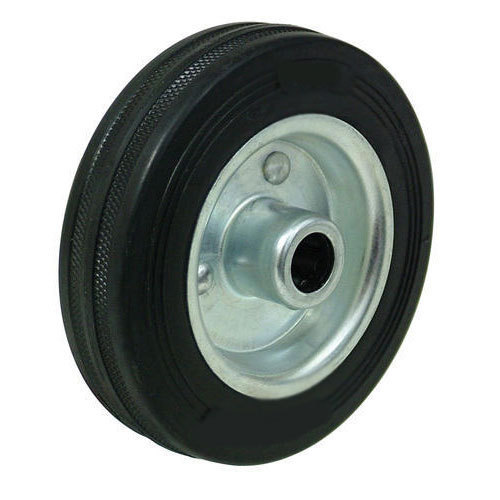
Rubber Wheel
A rubber wheel, as the name suggests, is a wheel with a tire made primarily of rubber or an elastomeric material.
Rubber wheels are used in various applications, from vehicles and industrial machinery to everyday consumer products. Here are some key features and common uses of rubber wheels:
Construction:
- Rubber wheels consist of a rubber tire that provides traction, cushioning, and durability. The tire is typically mounted on a wheel rim, which may be made of metal or other materials.
Traction and Grip:
- Rubber is known for its excellent traction and grip on various surfaces, making rubber wheels suitable for a wide range of applications, including vehicles, carts, and machinery.
Shock Absorption:
- Rubber tires have inherent shock-absorbing properties, which can help provide a smoother and more comfortable ride for vehicles and reduce vibrations in industrial equipment.
Durability:
- Rubber is a durable material that can withstand wear and tear, making it well-suited for wheels that come into contact with the ground or other surfaces.
Common Uses:
Automotive Tires: Rubber wheels are widely used in automotive applications for cars, trucks, motorcycles, and bicycles. They provide the necessary traction, stability, and shock absorption for safe and comfortable driving.
Industrial Equipment: Many industrial machines, material handling equipment, and heavy machinery use rubber wheels to move loads, transport goods, and provide stability on factory floors.
Carts and Trolleys: Rubber wheels are often used in shopping carts, luggage trolleys, and other wheeled carts, providing smooth movement and reducing noise.
Hand Trucks and Dollies: These types of equipment typically have rubber wheels to aid in transporting heavy loads with ease.
Furniture Casters: Rubber wheels are commonly found on the casters of furniture, such as chairs, tables, and office furniture, allowing for easy movement on various floor surfaces.
Outdoor Equipment: Many outdoor tools and equipment, such as lawnmowers, wheelbarrows, and garden carts, are equipped with rubber wheels for enhanced traction and durability in outdoor environments.
Exercise Equipment: Rubber wheels are used in various types of exercise equipment, such as treadmills and stationary bicycles, to provide a smooth and cushioned workout experience.
Medical Equipment: Some medical equipment, like hospital beds and stretchers, use rubber wheels for mobility and maneuverability within healthcare facilities.
Specialized Rubber Compounds:
- Depending on the specific application, rubber wheels may use specialized rubber compounds that offer particular properties, such as heat resistance, chemical resistance, or low rolling resistance for energy efficiency.
Maintenance and Replacement:
- Regular maintenance, such as checking tire pressure and tread wear, is essential to ensure the longevity and performance of rubber wheels. Replacement may be necessary when the rubber tire becomes worn or damaged.
The type of rubber wheel used can vary greatly depending on the application, with different tread patterns, tire sizes, and compounds designed to suit the specific requirements of the equipment or vehicle.
